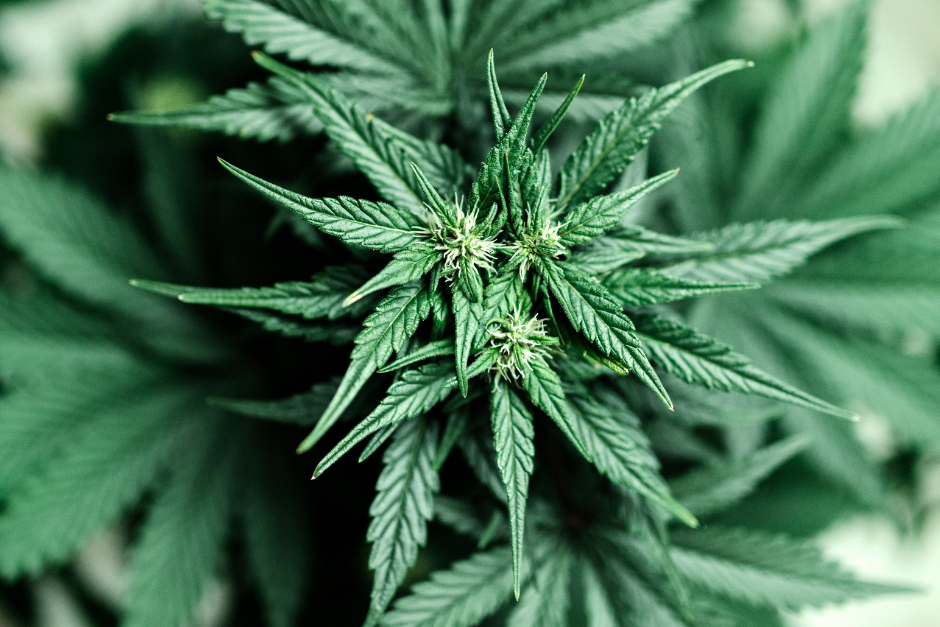
By Bill Current, founder of Current Consulting Group. Originally prepared for and published by PBSA in the Sept-Oct 2021 edition of the Journal. Read the full issue here.
Which drug testing method—urine, oral fluid or hair—is best at detecting marijuana and establishing a correlation to recent drug use and possible impairment? All three testing methods are highly accurate at detecting marijuana, but each has its own unique attributes.
When considering drug testing methods, it is critical to understand what contributes to marijuana-induced impairment and how long such impairment lasts.
The campaign to legalize marijuana is sometimes guilty of some misleading statements. For employers, perhaps, the most misleading and potentially dangerous claim about marijuana is that its impairing effects only last 2-3 hours and that beyond that very short, so-called “peak window of impairment” not only is a worker probably no longer a safety risk but employers really have no business knowing if that individual has marijuana in their system while on the job.
The term “peak window of impairment” itself can also be misleading and the reason is based on science: Researchers have concluded that there are many different factors that influence how each individual becomes impaired by marijuana use and for how long. Much depends, for example, on each user’s drug use history and frequency of use, the level of tetrahydrocannabinol (the psychoactive ingredient in pot) in the marijuana being used, the method of use (e.g., smoking a joint vs. eating a THC-laced brownie, etc.), and the task being performed (e.g., remembering instructions vs. operating a motor vehicle).
A Landmark 2021 Report
A new report from the University of Sydney claims to have identified a window of impairment for cannabis users, “suggesting more accurate timeframes of intoxication from one of the drug’s active compounds, tetrahydrocannabinol (THC).” The research, reported in the July 2021 issue of Neuroscience & Biobehavioral Reviews, analyzed 80 separate studies to “determine when people would be impaired after cannabis use. Depending on how much THC is taken, how it’s taken, and the person taking it, they found cognitive impairment could last between three and 10 hours.”[i]
Method of Use. How marijuana is used is particularly important when trying to determine the drug’s window of impairment. The Sydney report found:
“Our analysis indicates that impairment may last up to 10 hours if high doses of THC are consumed orally. A more typical duration of impairment, however, is four hours, when lower doses of THC are consumed via smoking or vaporization and simpler tasks are undertaken (e.g., those using cognitive skills such as reaction time, sustained attention and working memory).”
The report further stated: “This impairment may extend up to six or seven hours if higher doses of THC are inhaled and complex tasks, such as driving, are assessed.”[ii]
Frequency of Use. What about heavy users vs. occasional users? “Regular users of marijuana were found to experience less impairment than occasional users, but the authors also noted that regular users often took higher doses of THC and had less predictable levels of impairment after use.
“We found that impairment is much more predictable in occasional cannabis users than regular cannabis users. Heavy users show significant tolerance to the effects of cannabis on driving and cognitive function, while typically displaying some impairment.”[iii]
Intoxication vs. Impairment. It is important to understand that intoxication and impairment are two very different things. According to the Automobile Association of America (AAA): “As the AAA noted in a major 2016 study, THC can remain in a user’s blood or urine for weeks after they consume marijuana, depending on various factors. Furthermore, THC levels spike immediately after consumption, but decline to low levels very quickly – long before impairment ends.”[iv]
“Long before impairment ends?” This means that even if a person no longer feels high from marijuana use, they could still be impaired, depending on what tasks they are being asked to perform.
Method of Use. How marijuana is absorbed into the body affects impairment. “Additionally, the length and intensity of intoxication [not impairment] depend not only on the strength of the marijuana product, but also on how the drug is consumed. Inhaling marijuana typically causes the onset of intoxication within five minutes, with symptoms of intoxication [not impairment] lasting a couple of hours. On the other hand, ingesting marijuana (e.g., ‘special brownies’) can delay the onset of intoxication between one to four hours, and intoxication can last much longer than that.”[v]
An oft-cited report by the National Highway Traffic Safety Administration (NHTSA) provides some clarification on the issue of duration of marijuana impairment. Here is the part the pro-marijuana folks like: “Effects from smoking cannabis products are felt within minutes and reach their peak in 10-30 minutes. Typical marijuana smokers experience a high that lasts approximately 2 hours.”
However, the same report also states: “Most behavioral and physiological effects return to baseline levels within 3-5 hours after drug use, although some investigators have demonstrated residual effects in specific behaviors up to 24 hours, such as complex divided attention tasks.”
Psychomotor[vi] vs. Cognitive Impairment. The NHTSA report also stated the following regarding types of impairment: “Psychomotor impairment can persist after the perceived high has dissipated. In long-term users, even after periods of abstinence, selective attention (ability to filter out irrelevant information) has been shown to be adversely affected with increasing duration of use, and speed of information processing has been shown to be impaired with increasing frequency of use.”[vii]
From this, we learn that marijuana-induced impairment is affected by how long ago the drug was used, whether the person is a “long-term user” and among other factors, the tasks required.
What Employers Should Know
Technically, no drug testing method can prove, either legally or scientifically, that a person is impaired. But a positive drug test result does prove that a person had drugs in their system at the time of the test.
Some states that have legalized marijuana require employers to prove there is a connection between a positive drug test result and actual impairment before taking adverse employment action. Hence, the issue of how long marijuana impairment lasts becomes a critical point when choosing a drug testing method because each method has its own unique window of detection, and some methods align better than others with marijuana’s actual window of impairment.
There are only three drug testing methods endorsed by the federal government’s Substance Abuse and Mental Health Services Administration (SAMHSA): lab-based urine and oral fluid and soon, hair testing. Additionally, there are rapid-result, point-of-collection testing (POCT) devices for urine and oral fluid that have been cleared by the U.S. Food & Drug Administration (FDA) and that have similar windows of detection for most of the same drugs as their lab-based counterparts.
What to Look For In a Drug Test
Three critically important attributes to look for when choosing a drug testing method, include: 1) the method’s ability to detect recent drug use, 2) the method’s window of detection and how it aligns with marijuana’s window of impairment of 3-10 hours, per the Sydney report, and 3) the method’s ability to detect other drugs besides marijuana.
Recent-Use Detection. Lab-based oral fluid testing is the only method endorsed by SAMHSA that can detect recent drug use. This is because the parent drug is detectable in oral fluid, which makes detection possible within about 15 minutes after marijuana usage. Urine and hair testing identify a metabolite of marijuana, which requires several hours to become detectable in a urine sample and several days in a hair sample. Urine and hair testing are scientifically solid and legally defensible testing methods but not capable of detecting recent drug use. This is an important distinction to understand when drug testing in states that have legalized marijuana.
Window of Detection. The window of detection for urine testing starts about 6-7 hours after usage and lasts for about 3-4 days at the cut-off levels commonly used for workplace drug testing. Hair testing’s window of detection begins 7-10 days after usage, but drugs remain detectable for up to 90 days. Hence, both testing methods are effective for life-style drug-use detection like pre-employment screening but not recent-use detection.
Lab-based and rapid-result oral fluid testing have a window of detection that starts within minutes after usage and lasts for the entire 3-to-10-hour marijuana window of impairment. This is a critical point worth emphasizing. A drug testing method with a window of detection shorter than the marijuana window of impairment will miss, perhaps, many legitimate positive test results. Most, if not all, of these missed positives will show up in oral fluid testing with its longer window of detection.
Drug-Test Panel. When employers want to know which drugs to test for the answer is simple: “Test for the drugs people are using.” Marijuana? Of course! Pot is the number one used illicit drug in the world. People under its influence while on the job are typically less productive and more likely to be involved in a drug-related accident. A decision to stop testing for marijuana is ill-advised at best and potentially dangerous and costly. At the same time, it would be an equally questionable business decision to only test for marijuana.
The COVID-19 pandemic is being blamed, rightfully so, for a wild upswing in the use of synthetic opioids and opioid-related overdoses and fatalities as well as an increase in amphetamine usage. One drug testing provider said they experienced over a 200% increase in positive drug test results from random testing for opioids and amphetamines in 2020.[viii] Just like marijuana, these other drugs can cause impairment.
Lab-based and rapid-result urine and oral fluid testing can accurately detect many drugs, as can hair testing.
Conclusion
Here’s what we know: Drug testing applicants and employees for marijuana, especially those in safety-sensitive positions, is legal in all 50 states. Employers still have the right, in all 50 states, to prohibit workers from using marijuana while on the job, bringing marijuana into the workplace, and being at work impaired by marijuana. Choosing the right drug testing method will be influenced by a company’s drug testing objectives—testing to check a box or testing to maintain a safe and productive workplace. Understanding the science surrounding marijuana impairment and how long impairment lasts can help providers and their clients choose the drug testing method that will best meet each company’s needs.
[i] How long does impairment last after cannabis use? Cosmos. April 2021. https://cosmosmagazine.com/health/body-and-mind/how-long-does-impairment-last-after-cannabis-use/
[ii] Ibid.
[iii] Ibid.
[iv] Overview of Major Issues Regarding the Impacts of Alcohol and Marijuana on Driving. March 2016. https://aaafoundation.org/overview-major-issues-regarding-impacts-alcohol-marijuana-driving/
[v] Acute Marijuana Intoxication. Children’s Hospital Colorado. https://www.childrenscolorado.org/conditions-and-advice/conditions-and-symptoms/conditions/acute-marijuana-intoxication
[vi] Psychomotor refers to the “relationship between cognitive functions [thinking, remembering, understanding] and physical movement… demonstrated by physical skills such as movement, coordination, manipulation, dexterity, grace, strength, speed—actions which demonstrate the fine or gross motor skills, such as use of precision instruments or tools, and walking.” Source: https://en.wikipedia.org/wiki/Psychomotor_learning
[vii] Drugs and Human Performance Fact Sheets. NHTSA. April 2014 Revised. https://www.nhtsa.gov/sites/nhtsa.gov/files/809725-drugshumanperformfs.pdf
[viii] From an internal report by DISA Global Solutions included in a presentation slide deck as part of a DISA webinar in April 2021. Used with permission. https://disa.com/contact

